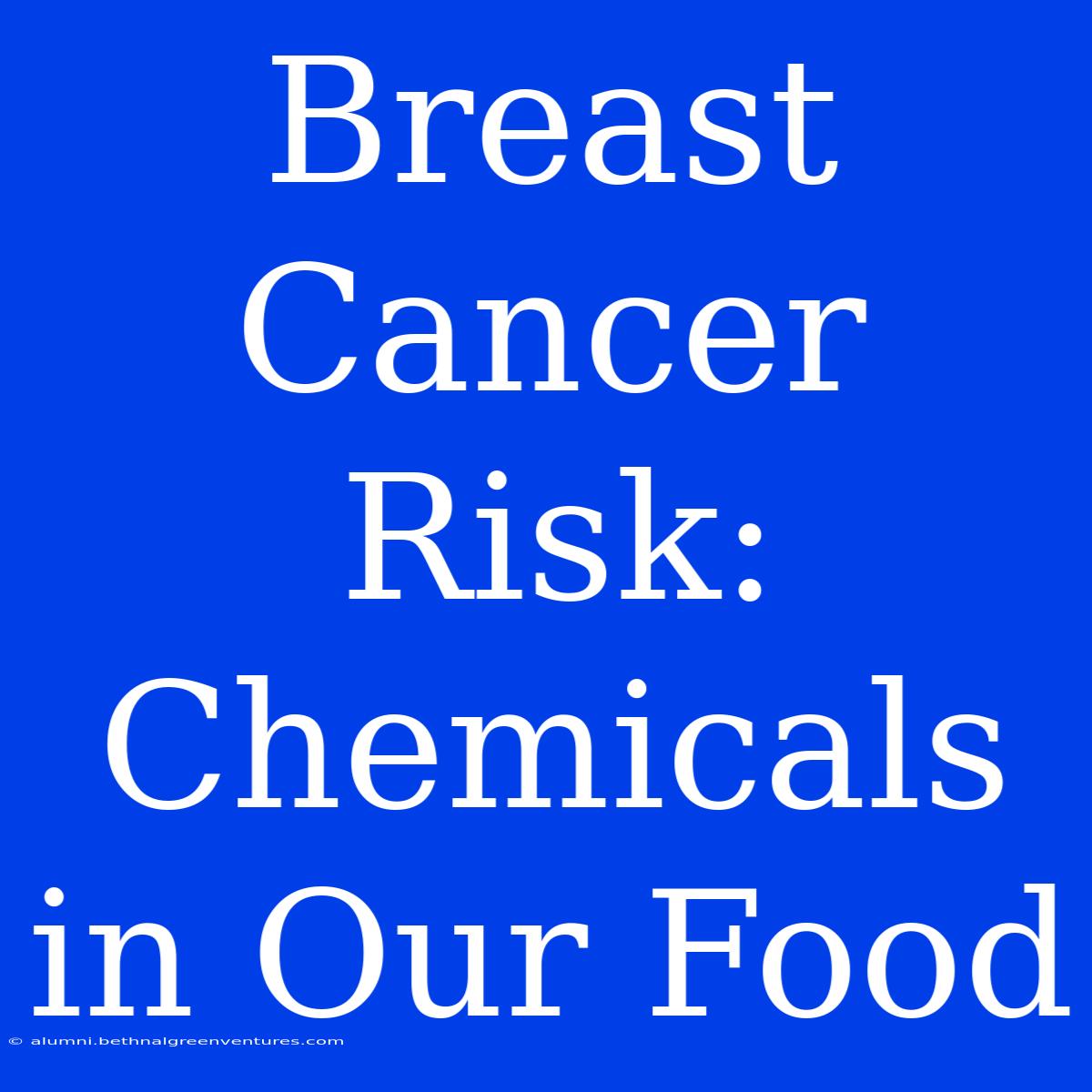Breast Cancer Risk: Unmasking the Hidden Threat of Chemicals in Our Food
Is there a connection between the food we eat and our risk of breast cancer? The alarming truth is, some chemicals lurking in our food supply could be playing a role. Understanding these hidden threats is crucial for making informed choices and protecting our health.
**Editor Note: **This article explores the potential link between chemicals in our food and breast cancer risk. It highlights key findings and emphasizes the importance of being informed about these hidden dangers. Understanding this connection can empower us to make choices that promote better health.
Why is this information vital? Breast cancer is one of the most common cancers affecting women globally. While genetic factors play a role, environmental exposures like chemicals in our food are increasingly recognized as potential contributors.
This article delves into the complex relationship between chemicals and breast cancer risk, exploring the following key aspects:
- Types of Chemicals: Examining the various classes of chemicals found in our food, their sources, and potential impact on breast health.
- Mechanisms of Action: Understanding how these chemicals might disrupt the body's hormonal balance, promote cell growth, or contribute to inflammation, ultimately increasing cancer risk.
- Evidence and Studies: Reviewing scientific evidence that links specific food chemicals to breast cancer risk and exploring the limitations of current research.
- Strategies for Minimizing Exposure: Providing actionable steps individuals can take to reduce their exposure to these chemicals and promoting overall health.
Analysis: This article combines insights from scientific studies, expert opinions, and current research to offer a comprehensive overview of the issue. We analyzed a wide range of sources to provide clear, evidence-based information, ensuring a balanced perspective on the topic.
Key Takeaways of Food Chemicals and Breast Cancer Risk
| Category | Key Aspects |
|---|---|
| Types of Chemicals | Pesticides, Herbicides, Industrial Chemicals, Food Additives |
| Mechanisms of Action | Hormonal Disruption, Inflammation, Cell Growth Stimulation |
| Evidence and Studies | Growing Body of Evidence, More Research Needed |
| Strategies for Minimizing Exposure | Organic Foods, Whole Foods, Limit Processed Foods |
Types of Chemicals
Pesticides and Herbicides
- Sources: Used to protect crops from pests and weeds, residues can remain on fruits, vegetables, and grains.
- Concerns: Some pesticides are endocrine disruptors, interfering with hormone regulation. Studies suggest a link between pesticide exposure and increased breast cancer risk.
Industrial Chemicals
- Sources: Can contaminate food during processing, packaging, or transportation. Bisphenol A (BPA) and phthalates are examples.
- Concerns: BPA and phthalates are endocrine disruptors, potentially mimicking estrogen in the body. Research suggests a possible link between exposure to these chemicals and breast cancer.
Food Additives
- Sources: Found in processed foods, preservatives, colorings, and flavorings.
- Concerns: Some additives may have estrogenic activity, and long-term consumption may increase breast cancer risk.
Mechanisms of Action
Hormonal Disruption
- Explanation: Many chemicals can mimic or block the action of hormones like estrogen, disrupting the body's natural balance.
- Impact: Hormonal imbalances can contribute to breast cell growth and proliferation, potentially increasing cancer risk.
Inflammation
- Explanation: Some chemicals trigger inflammation, a natural response to injury or infection.
- Impact: Chronic inflammation can contribute to cell damage and the development of cancer.
Cell Growth Stimulation
- Explanation: Certain chemicals may promote the growth and division of cells, increasing the likelihood of mutations leading to cancer.
- Impact: This accelerated cell growth can disrupt normal cell function and lead to uncontrolled proliferation, a hallmark of cancer.
Evidence and Studies
- Growing Body of Evidence: Research increasingly links exposure to specific food chemicals to increased breast cancer risk. Studies examining pesticide residues, BPA, and phthalates show potential associations.
- More Research Needed: While evidence is growing, more research is needed to confirm the specific effects of various chemicals and to understand their long-term impacts.
Strategies for Minimizing Exposure
- Choose Organic Foods: Opting for organic produce, meat, and dairy minimizes exposure to pesticides and herbicides.
- Focus on Whole Foods: Emphasize minimally processed foods, fruits, vegetables, and whole grains in your diet.
- Limit Processed Foods: Processed foods often contain additives, preservatives, and chemicals that can increase exposure.
Conclusion
The link between food chemicals and breast cancer risk is complex and multifaceted. While research continues to shed light on this issue, it's crucial to be informed about the potential dangers and adopt preventive measures. By making conscious food choices and minimizing exposure to these chemicals, individuals can take proactive steps towards promoting breast health and reducing cancer risk.
